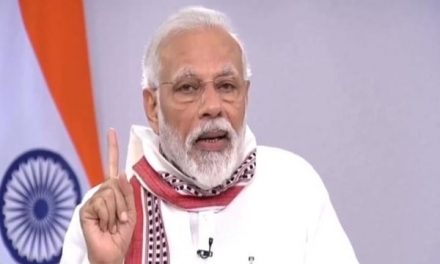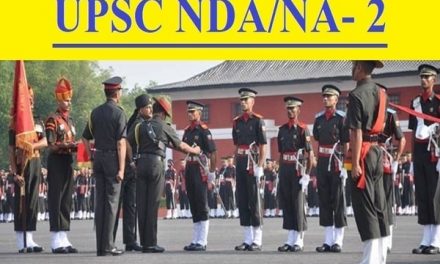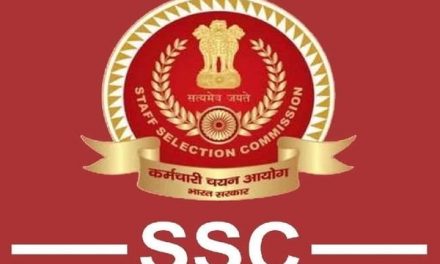The National Educational Policy was approved by the Union Cabinet today. This brings a sea of change in the way education will be delivered by the schools and colleges, providing far more flexibility to students.
Minister Prakash Javadekar said that the cabinet under Prime Minister Narendra Modi has approved a New Education Policy for the 21st century, adding “It is important as for 34 years there were no changes in the education policy.”
The NEP 2020, which proposes several structural changes in the early as well as the higher education system, has been developed after consultations for nearly five years with stakeholders and the general public.
The new policy aims to achieve 100 percent of youth and adult literacy in India. While announcing the policy details, Amit Khare, Secretary, Higher Education said that the government aims to increase the public investment in the education sector from the current 4.3 percent to reach 6 percent of GDP at the earliest.
Here are the highlights of India’s new National Education Policy 2020:
School Education:
Universal Access: The NEP 2020 has provisions to ensure universal access to school education at all levels- preschool to secondary.
Some of these provisions include infrastructure support, innovative education centers to bring back dropouts into the mainstream, tracking of students, and their learning levels, facilitating multiple pathways to learning involving both formal and non-formal education modes and association of counselors or well-trained social workers with schools.
New system of education
The Modi government unveiled a new 10+2 system, which will be divided into 5+3+3+4 format. The NEP changes the school education system to a 5+3+3+4 format. This means the first five years of the school will comprise of the foundation stage including three years of pre-primary school and classes 1 and class 2. The next three years will be divided into a preparatory stage from classes 3 to 5. Later three years of middle stage (classes 6 to 8), and four years of secondary stage (classes 9 to 12).
The schools will not have any rigid formation of streams of arts, commerce, science, students can take up whichever courses they want.
Multilingualism and the Power of Language: The NEP 2020 advocates for mother-tongue/local language/regional language as the medium of instruction at least till Grade 5, but preferably till Grade 8 and beyond. Sanskrit to be offered at all levels of school and higher education as an option for students, including in the three-language formula. Other classical languages and literature of India also to be available as options. No language will be imposed on any student. Several foreign languages will also be offered at the secondary level.
The single common entrance exam for all colleges
The common Entrance exam for all higher education institutes to be held by NTA. The exam will be optional and not mandatory, announced the HRD Ministry.
The government has also decided to discontinue MPhil courses. To pursue research, MPhil will not be allowed and all the courses at undergraduate, postgraduate and Ph.D. level will be interdisciplinary. The 4-year program may also lead to a degree ‘with Research’ if the student completes a rigorous research project.
Rationalized Institutional Architecture: The definition of the university will allow a spectrum of institutions that range from Research-intensive universities to teaching-intensive universities and autonomous degree-granting colleges. Affiliation of colleges is to be phased out in 15 years and a stage-wise mechanism is to be established for granting graded autonomy to colleges. Over a period of time, it is envisaged that every college would develop into either an autonomous degree-granting college or a constituent college of a university.
Financial support for students: Efforts will be made to incentivize the merit of students belonging to SC, ST, OBC, and other SEDGs. The National Scholarship Portal will be expanded to support, foster, and track the progress of students receiving scholarships. Private HEIs will be encouraged to offer larger numbers of free ships and scholarships to their students.
Open and Distance Learning: This will be expanded to play a significant role in increasing GER. Measures such as online courses and digital repositories, funding for research, improved student services, credit-based recognition of MOOCs, etc, will be taken to ensure it is at par with the highest quality in-class programs.
Online and Digital Education: A dedicated unit for the building of digital infrastructure, digital content, and capacity building will be created in the MHRD to look after the e-education needs of both school and higher education.
Technology in Education: An autonomous body, the National Educational Technology Forum (NETF), will be created to provide a platform for the free exchange of ideas on the use of technology to enhance learning, assessment, planning, administration. Appropriate integration of technology into all levels of education will be done to improve classroom processes, support teacher professional development, enhance educational access for disadvantaged groups and streamline educational planning, administration, and management.
Impetus on vocational education
The New Education Policy also gives importance to the Vocational education of the students. The new policy integrates vocational education into all schools and higher education institutions in a phased manner over the next decade. By 2025, at least 50% of learners through the school, and higher education system shall have exposure to vocational education.
The B.Voc. degrees introduced in 2013 will continue to exist, but vocational courses will also be available to students enrolled in all other Bachelor’s degree programs, including the 4-year multidisciplinary Bachelor’s programs, the government announced.
‘Lok Vidya’, important vocational knowledge developed in India, will be made accessible to students. The HRD ministry, which will be renamed as Education Ministry, would constitute a National Committee for the Integration of Vocational Education (NCIVE).
The policy also mentions creating institutions such as the National Research Foundation (NRF) and a Higher Education Commission of India (HECI).
Assessment Reforms: With NEP 2020, the Centre hopes to shift from summative assessment to a more competency-based regular assessment which tests analysis, critical thinking and conceptual clarity. All students will take school examinations in Grades 3, 5, and 8. Board exams for Grades 10 and 12 will be continued, but redesigned with holistic development as the aim. A new National Assessment Centre, PARAKH (Performance Assessment, Review, and Analysis of Knowledge for Holistic Development), will be set up as a standard-setting body.
Promotion of Indian Languages: To ensure the preservation, growth, and vibrancy of all Indian languages, NEP recommends setting an Indian Institute of Translation and Interpretation (IITI), National Institute (or Institutes) for Pali, Persian and Prakrit, strengthening of Sanskrit and all language departments in HEIs, and use mother tongue/local language as a medium of instruction in more HEI programs.











